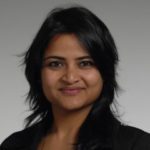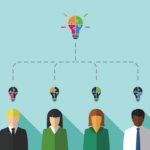Ascent is a new initiative by PCMA and Convene, to inspire and spur inclusion and diversity in our industry. Ascent also seeks to reach decision makers and workplace leaders, to educate them on the best practices and the business case for inclusion and diversity. At Convening Leaders 2018, Ascent invited Dorri McWhorter, CEO of the YWCA of Metropolitan Chicago to speak as its inaugural thought leader.
The following is an edited and condensed transcript:
“I’m really excited to be able to talk about this topic, and I have to say that although I’m the CEO for the YWCA Metropolitan Chicago, that actually these are my thoughts and my view of the world. But I really do think it’s important that we have a real conversation, particularly because it is an intimate group.
What I hope to do today is to be able to share a lot of my philosophies as it relates to diversity, and definitely have that dialogue. The first of my philosophies that I’d like to share with you is simply that people have preferences. It’s really that simple. And we also know that some of those preferences often become part of our identity and how we want to show up in the world. Not only that, but how we want people to interact with us.
I think when we start thinking about [how people have attempted to classify all of the different dimensions of diversity] the primary elements are the ones we probably hear talked about the most. So race, gender, age, gender identity, ethnicity, sexual orientation, mental or physical ability. Those are some of the primary ones.
The secondary ones, just to highlight a few elements, are appearance. So yes, tall girls rock. So appearance is one. Geography. To think about how New Yorkers identify, even Chicagoans — our geography is part of our identity. And of course, there’s always the French, who we all know have a definite identity relationship there. But also, the secondary identity, or the secondary dimensions, in terms of marital and family status and relationship status, are all part of identity.
Then to go into the other layers a little further, you see the organizational layers and the cultural layers. I think about organizationally, part of when I was when in the corporate sector I’m actually a CPA by background. I was a partner at a public accounting firm, and being a partner, or being a manager, or being in a different managerial or senior position, was absolutely part of how people identified at the organization. So that’s nothing new.
So it’s interesting, though, as much as I appreciate all of these efforts to really classify all of the different dimensions of diversity, when you think about it, there are actually an infinite number of dimensions of diversity. Because as I first said, people have preferences, and those absolutely show up in how we identify. So for example, I consider myself a dog-loving, shoe-loving, wife, daughter, and socially conscious accountant.
But this actually gets me to my second philosophy around diversity. Bottom line, humans are different. The problem really is that we we’ve worked so hard to really classify and label people and how people show up, that we never really focused on truly building competencies and skills to really become more agile and flexible to understand how we can exist with all of these different dimensions of diversity.
I actually like to blame certain people, and so I actually blame Henry Ford for this. Have any of you ever watched The History Channel’s, “The Men Who Built America?” It’s a fascinating series. I tend to watch it over long holidays, just because I’m a big nerd and I really enjoy these types of things. First of all, you wonder where the women were when the men were building America, but outside of that, you really get to see how Henry Ford, in building the Model T, absolutely brought amazing production processes. But those things were great for building machines, and automobiles, and having human productivity work in a certain way at that time, but now when we look at human processes, the standardization that helped with productivity back then doesn’t necessarily apply now.
What you really need to do is start having a different conversation, and then when you talk about how does diversity and inclusion play into these standardized processes, we recognize that we have the opportunity to support how people show up, because they are not the same. So we’ve developed solutions, as a workforce, like flexible work arrangements that we know largely affect women in the workplace, and even more specifically, women with children. So we kind of feel good about ourselves. We’ve sort of checked that box, and that’s one element of diversity that’s sort of accomplished.
But we’re still trying to figure out how do we get the appropriate representations, whether it’s people of color, millennials, or other demographics —or these other diversity elements or attributes of human variability as I like to say. I’m thinking about, too, that we have a live-stream audience are representing different countries, and different people, so those are also dimensions of diversity that we don’t necessarily think about or we need to consider and think a lot differently about.
So as we look at how we tackle this issue of diversity, I always think it’s so amazing it’s 2017, and when I entered the work force 20 plus years ago, we were talking then about how to get diverse accountants. It’s fascinating to see that these conversations are still occurring across a number of venues and a number of different places.But I think we’ve actually moved past the business case for diversity, so we hear that a lot. We already know that there are a lot of benefits to diversity. So for example, gender diverse companies are 15 percent more likely to outperform their peers. Ethnically diverse companies are 35 percent more likely to outperform their peers, and diverse teams produce 80 percent better results in self assessments. So the bottom line is when you have a diverse and inclusive work force, it enables people to better connect with the people that they serve.
The question isn’t why we should create diverse and inclusive environments — diversity and inclusion ultimately leads to better results no matter how you measure it. The question is always how, and I think that’s what people are struggling with is the how. So this is where I believe that you come in.
I truly believe that if we are going to have more diverse and inclusive workplaces, and create better outcomes, then it absolutely has to start with you. But first we have to deal with some hard truths. The fact is that most of us don’t lead the most diverse and inclusive lifestyles, yet we come to our workplaces and we expect people to magically know, or even want to exposed to greater diversity.
An analysis of social media contacts was provided from the 2013 American’s Values survey by Public Religion Research Institute. The results were interesting, and they demonstrated that in fact we don’t live diverse lives. The degree of racial and ethnic diversity in American’s social networks vary significantly according to their particular race or ethnicity. So among white Americans, 91 percent of people comprising their social networks are also white. Among black Americans 83 percent of people in their social networks are composed of people who are also black. Among Hispanic Americans, approximately 2/3, 64 percent of the people who comprise their social networks are also Hispanic. And most surprisingly, 8 percent of Americans do not have a single friend of another race or culture in their network. Now 8 percent doesn’t sound like a large percentage, but if you think about it, that’s over 26 million people.
In fact, the accountant in me, it’s actually 26,029,215 people. So that’s quite surprising when you think about that large amount of people, particularly living in this country, that do not have or do not … and the piece that’s surprising to me as well is that we’re talking about social networks and people are a little more liberal with their social networks in terms of who they let in than they are even with their physical networks or their physical companionships. So if you think about it, that’s even more disturbing.
So again, the question is how? Well I’m very hopeful considering today’s digital landscape really offers us an opportunity to interact with other cultures and even other parts of the world that were out of reach just decades ago. So this instantaneous exposure to other cultures really provides opportunities to expand our knowledge and have different conversations. And we know it’s possible, because marketers are already leading the way.
So this leads me to my third philosophy. Buckminster Fuller, the humanitarian, architect, and futurist said that, “You never change things by fighting the existing reality. To change something, build a new model that makes the old model obsolete.” So I believe that if we’ve got to solve the challenges around diversity and inclusion, we have to ask a different question. So instead of asking questions around how do we actually include women and people of color, or choose any dimension of diversity … so whether we’re talking about millennials … whatever dimension of diversity we’re talking about … instead of asking that, we have to ask the question around how do we create workplaces or environments where everyone can thrive and the business thrives? I firmly believe that the quality of the solution that we come up with absolutely depends on the quality of the question.
So now we have to go about answering it. I actually want to restructure the question for our conversation today, so that you can think about all the environments and the work that you do a little differently, and ask a broader question. How do we understand, respect, celebrate, and optimize diversity to achieve the best outcomes?
We have to think more broadly about the question. I’m very hopeful as we’ve seen marketers really understand that humans are variable, and begin to shift their practices from moving to personas. I’m sure many of you saw when marketers often would use personas to describe what this particular client looked like or who the target audience looked like. But now because of the digital world, we’re actually able to get to more specific personal customization, and really do more people-based marketing.
Of course the technology platforms like Google, and Facebook, allows us to identify consumers, who they are, their specific preferences, and how they want to experience a brand. But what is even more important about that is that these platforms also allow people to change their preferences and keep up with what those changes may look like. What’s so fascinating is that we talk about marketers, and we talk about consumers, so everything is focused on how we identify consumers, what they look like, what their preferences are, and marketers are focused on that. But then we act like that these same consumers … When they come into the workplace, we completely ask them to lose all of that identity, and they take on one identity and that identity becomes your employee whatever that may be, and whatever that means for them.
Companies are more focused on telling people to bring their whole self to work, but we haven’t exactly put processes in place to truly facilitate that. At the YWCA Metropolitan Chicago, we absolutely had to change our thinking around how we treated our employees, and we had to ask a different question. First as you’ve heard today, our mission is to eliminate racism and empower women, so theoretically we should absolutely be embodying diversity, and to some degree we absolutely do.
We are 90 percent women, and no one race or ethnic group represents a majority. So some would say, to some level, we at least have conquered this diversity thing purely based on our representation. And this where I probably should go look for more cute puppies so that you can hear the rest of this presentation, but the fact is that is although we were very diverse, we were not performing well as an organization. So we had to ask a different question, and that question really was how do we leverage the talent we have, so that the individuals can thrive as well as the business? And really given the gravity of work in human services, the success of our people was absolutely critical to our ability to do the work.
The first thing I did was brought on a new human resources leader, who as our chief human resources officer had to completely redefine our employment brand. She actually created what we call “possibility partners,” unleashing purpose and potential, which I’ll get into a little more detail later. Her rebranding earned her a new title, and we renamed her HR role as our Chief Possibility Officer. I actually call her our Chief Possibility, Purpose, and Potential Officer, or C3PO when I’m so inclined to do so. But officially she’s our Chief Possibility Officer, and I think I’m hitting this a little much, sorry.
What we learned is that just because people were working for our cause, they were not feeling fulfilled. One of the things that we did was reach out to Aaron Hurst, who actually lives in Seattle. He is a founder of The Taproot Foundation, and the author of a book called The Purpose Economy.
In The Purpose Economy, it talks about studies that show that, it doesn’t matter what the profession or the area of expertise, that what happens is that you have a third of the people there that see the work as just a job. You have a third of the people that see the work as a career and definitely look to the advancement to feel fulfilled, but then you also have a third of the work that is a calling for people, and what that looks like for example — one of my favorite references he talks about orderlies in hospitals, that there’s a group of orderlies that would go to the long-term care units and change the pictures so that the people there could experience different views even though they could not leave. That’s clearly an example of someone who finds their work to be more of a calling, but we have the same dynamic within our organization.
As I mentioned, we had to create processes that allowed people to truly thrive, It was not enough to say, we’re diverse. We have 90 percent women. We have different ethic groups. We were beyond that. That was only one dimension of diversity that we could actually talk about, but how do we truly tap into people being who they are? So one of the things that we launched was what we call our possibility partners to really help release the purpose and potential. So we started by getting rid of annual performance evaluations mostly because they were highly ineffective to truly supporting the development of people, and research has shown that they actually have the opposite effect and make people feel less motivated. So we went to what we call weekly possibility partner conversations, so that we could have supervisors really be more in tune to how they can support the development and the performance of our employees.
We had to start breaking through these elements of diversity, and really understanding what makes an individual thrive. Our focus on creating a better experience for our people has absolutely created a better environment for them to truly unleash their purpose and potential, and have inspired new ideas across the organization where people are fully engaging their whole self, and they are driving greater business results.
The question really becomes again, what can you do? I’m truly a “possibilityist,” and I believe that anything we do has to absolutely start with one individual. One individual being empowered enough to express their truth can absolutely impact us all.
People don’t necessarily do things intentionally, but the reality of it is if you’re trying to promote diversity and inclusion, you do need to do simple things as look at pictures on the wall. One of the things that we talk about with some of the childcare providers that we work with at the YWCA, is that when you have little books out, you need people of color. You need little kids of color in those books. It’s the simple things like that, so it doesn’t have to be that complicated.Another thing that we can do is to absolutely be curious and interested in others. Simply talk to people across group lines. So dog people talk to cat people. Cat people talk to dog people. It doesn’t have to be that difficult. I mean I spend a lot of time watching cats knock stuff over on YouTube, because I think it’s hilarious, and so even though I’m a dog person, I can do that.
Clearly those are very oversimplified examples, but the reality is — particularly based on the statistics that we talked about earlier with the social media numbers — we don’t talk to each other enough to really understand what that looks like and how we can gain a better context. I’ll have to admit that I absolutely do not have all the answers, but I do know that if you first show up in your identity, however you define that, and then actively try to understand and appreciate how others choose to show up in the world, that we will absolutely make greater progress on creating more diverse and inclusive environments.
I invite you to take a pledge with me that I’ve made to myself and have incorporated at the YWCA as well. oing to invite you to stand with me, and trust —no one needs to take a knee. It’s not that serious of a pledge. I’ll actually preview the words, and for those of you on live stream at home, feel free to pledge in front of your computer. That’s totally fine too. So I’ll talk. I’ll say it, and then you can repeat after me, and I think you have to raise your right hand, because I think that’s how pledges are taken.
“Today I serve the world by being my most empowered self. I leverage my whole self, and appreciate others for doing the same. In being our whole empowered selves, we improve the world.”
Thank you.



